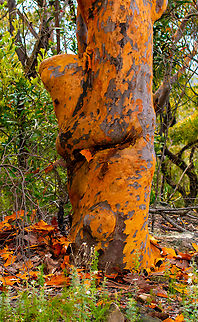
Appearance
"Angophora costata" is a tree that typically grows to a height of 30 m and forms a lignotuber. It has smooth pinkish or orange-brown bark that weathers to grey and is shed in small scales.Young plants and coppice regrowth have sessile, elliptical to egg-shaped leaves arranged in opposite pairs with a stem-clasping base, 60–125 mm long and 20–65 mm wide. Adult leaves are arranged in opposite pairs, glossy green but paler on the lower surface, lance-shaped or curved, 70–190 mm long and 12–35 mm wide on a petiole 9–25 mm long.
New leaf growth is strongly tinted with red. The flower buds are arranged on the ends of branchlets on a branched peduncle 3–25 mm long, each branch of the peduncle with usually three buds on pedicels 3–15 mm long. Mature buds are oval to globe-shaped, up to 10 mm long and 11 mm wide. There are five sepals up to 3 mm long and the petals are white to creamy white with a green keel, 3–5 mm long and 3–6 mm wide. Flowering occurs from October to December.
The fruit is a oval or bell-shaped capsule up to 20 mm long and wide. New seedlings have petiolate round cotyledon leaves 1.5 cm wide and long.
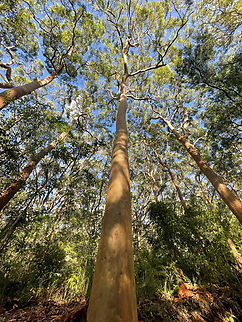
Naming
Sydney red gum was first formally described in 1788 by German botanist Joseph Gaertner and given the name "Metrosideros costata" in his book "De Fructibus et Seminibus Plantarum", from material collected by surveyor David Burton around Port Jackson.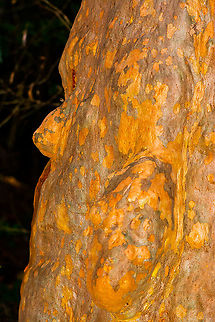
Distribution
"Angophora costata" grows in sandy soil, often over sandstone and occurs naturally in Queensland and New South Wales. It is widely distributed in south-eastern Queensland and disjunctly in the White Mountains National Park. In New South Wales it mainly occurs in coastal areas south from Coffs Harbour to Narooma and as far west as the Blue Mountains.It is found from sea level to an altitude of 300 m in areas of predominantly summer rainfall receiving 600 to 1,200 mm a year. Maximum temperatures across its range vary from 25 to 35 °C and minimum temperatures from 0 to 8 °C, with anywhere from 0 to 50 days of frost.
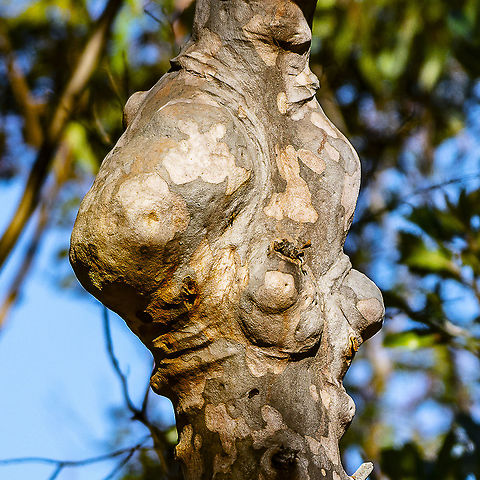
Habitat
It grows in open forest and woodland, in association with such species as Sydney peppermint, bangalay, grey gum, blue-leaved stringybark, white mahogany, broad-leaved white mahogany, large-fruited red mahogany, red bloodwood, yellow bloodwood, pink bloodwood lemon-scented gum, turpentine, forest oak, and cypress pines, and in hind dune communities with wedding bush and burrawang.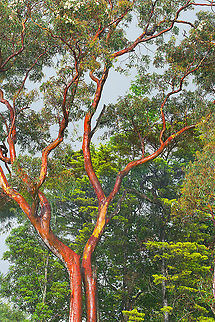
Cultural
Smooth-barked apple grows well in a variety of situations and can be easily grown from seed in a loose, well-drained seed-raising mixture. Some specimens have straight trunk but others have a more branching habit with twisted trunks. The tree sometimes sheds branches and should not be planted close to buildings.References:
Some text fragments are auto parsed from Wikipedia.